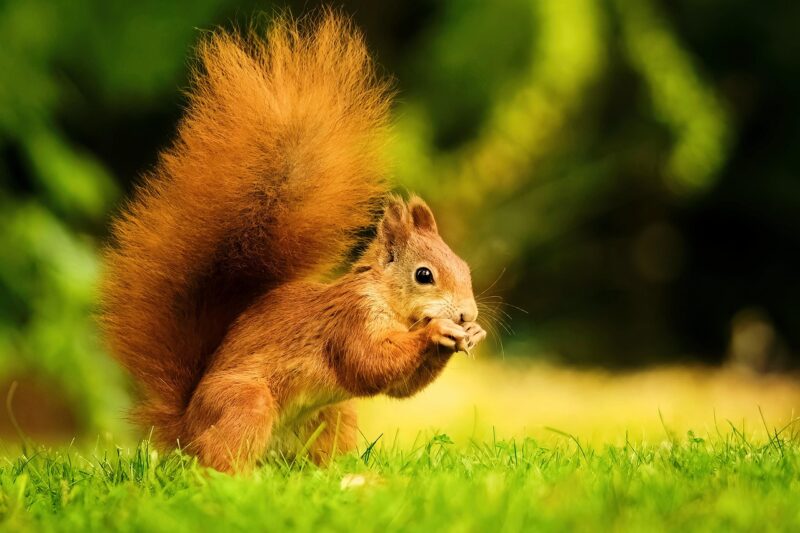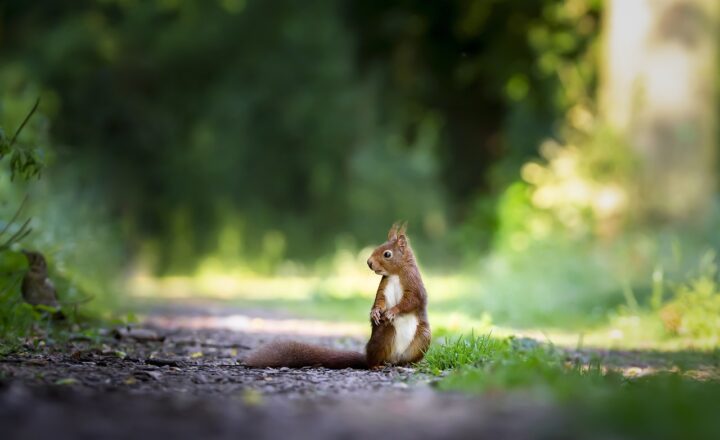Squirrels as Urban Pioneers: How They’ve Adapted to Life in Cities and Suburbs
November 13, 2024

Squirrels are often seen scurrying around in parks, gardens, and even bustling city streets, but few people stop to ponder how these engaging creatures have become the urban pioneers of our time. In this article, we will explore the fascinating ways in which squirrels have adapted to urban living, their behaviors in the context of human interference, and what their presence can tell us about urban ecosystems.
1. Understanding the Urban Adaptation of Squirrels
Squirrels are a family of rodents known scientifically as Sciuridae, which includes tree squirrels, ground squirrels, and flying squirrels. They are naturally found in forests and woodlands, yet many species have successfully made their homes in urban and suburban environments. This adaptation has been nothing short of remarkable, showcasing their intelligence, resourcefulness, and flexibility.
But how exactly have squirrels adapted to life in cities and suburbs?
1.1. Food Sources in Urban Areas
Urban areas, despite their concrete jungles, can provide abundant food sources for squirrels.
– Human Food Waste: Squirrels have become proficient scavengers, often foraging through garbage bins or dining at outdoor cafés where food scraps are abundant.
– Bird Feeders: Many suburban households maintain bird feeders, which can easily attract squirrels. They’ve learned to navigate these feeders with surprising agility to access seeds and nuts intended for birds.
– Fruit Trees and Gardens: Urban gardens, parks, and trees laden with fruit often become feeding grounds where squirrels can gather sustenance from apples, berries, and nuts.
2. Shelter and Nesting Adaptations
Finding shelter in urban settings poses a challenge for wildlife, including squirrels. However, they have developed several clever strategies to establish their homes:
– Using Buildings and Structures: Squirrels often utilize attics, roofs, and eaves of homes for nesting, making them unintentional tenants of urban dwellings.
– Tree Canopies in Parks: Urban parks provide essential green spaces where squirrels can build nests in trees, allowing them to stay close to food sources while being shielded from predators.
– Human-Made Materials: In some instances, squirrels may use discarded materials such as plastic or fabric to create nests, showcasing their ingenuity in resource usage.
3. Social Behavior and Interaction with Humans
The playful and often comical nature of squirrels has made them a favorite sight in urban environments. However, their interactions with humans can influence their behavior:
– Tolerance to Human Presence: Urban squirrels exhibit a surprising level of comfort around humans, often approaching picnic areas and busy parks as if they belong.
– Feeding Habits: Some squirrels have become reliant on human-provided food, whether intentional or not, which can affect their natural foraging instincts and nutritional health.
– Behavioral Adaptations: The constant hustle and bustle of city life have led squirrels to develop strategies to evade potential dangers, like speeding cars or predators. They often use a complex system of vocalizations to alert each other of threats.
4. The Ecological Impact of Urban Squirrels
As ubiquitous as they are, squirrels play a vital role in urban ecosystems:
– Seed Dispersal: Squirrels are efficient seed dispersers, often burying nuts and seeds in various locations, inadvertently contributing to plant growth and forest regeneration.
– Food Source for Predators: In urban environments, squirrels serve as an important food source for predators like hawks, foxes, and even domestic pets, forming a critical part of the urban food chain.
– Indicators of Environmental Health: The presence and population health of urban squirrels can also indicate the overall health of urban green spaces, contributing valuable information to ecologists studying urban wildlife.
5. Challenges Faced by Urban Squirrels
Despite their adaptability, urban squirrels face a variety of challenges:
– Habitat Loss: As cities continue to expand, natural habitats are being encroached upon, limiting the space and resources available to urban wildlife.
– Traffic Hazards: The primary danger for squirrels in urban areas is vehicular traffic, posing a serious risk as they navigate roads to reach food and shelter.
– Human Interference: While many people find squirrels charming, not all humans appreciate their presence, leading to conflicts involving destruction of nests or feeding restrictions.
Conclusion: Embracing Urban Wildlife
Squirrels are remarkable examples of resilience and adaptability in the face of urbanization. Their ability to thrive in cities and suburbs underscores the need for a harmonious coexistence between humans and wildlife. As we continue to build and expand our urban landscapes, it is essential to create spaces that support and preserve local wildlife like squirrels. By fostering a more inclusive environment for these captivating creatures, we gain valuable insights into the intricate tapestry of urban ecosystems and the importance of biodiversity.
So next time you see a squirrel dart across your path or engage in amusing antics, take a moment to appreciate their role as urban pioneers and the unique adaptations that allow them to thrive alongside us.







